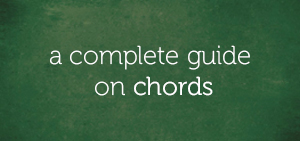If you give me the next ten minutes or so, I’ll show you four notes I never knew they were on the piano until 2008.
I’ve played piano for almost two decades (I started in 1996.) I actually played for twelve years before I discovered these notes; believe it or not, there are several people out there who do not know that these notes are on the piano.
Submission: Before I discovered these notes on the piano, I used their enharmonic equivalents. The term enharmonic equivalent means an alternate spelling for a note on the keyboard. For example,
C#:
…is the enharmonic equivalent of Db:
Alright! Let’s get started by taking a look at notes.
An Overview Of Notes
A note is a musical sound of a precise [or definite] pitch.
A pitch can be defined as the degree of highness or lowness of a music sound. Scales, intervals, chords, chord-progressions, and songs are products of the organization of definite pitches (aka – “notes”.)
The octave is divided into twelve equal parts and each part is known as a half step (aka – “semitone“) therefore, twelve half steps make one octave. Within the compass of the octave, there are twelve pitch classes; seven of them are naturals while five of them are accidentals.
The naturals are white on the piano and there are seven of them:
…in one octave:
Accidentals are black on the piano and there are five of them:
…in one octave:
The naturals are named using Roman alphabets. Due to the fact that there are seven naturals, seven alphabets are used – A, B, C, D, E, F, and G. The letter names of the accidentals are derived from the pitch modification of natural notes.
Let’s talk about pitch modification before we proceed.
“What Is Pitch Modification?”
Pitch modification is the raising or lowering of the pitch of a note using symbols known as pitch modifiers. A pitch modifier is a symbol that raises the pitch of a note and there are five pitch modifiers:
- The sharp
- The flat
- The natural
- The double flat
- The double sharp
“Here’s what they (pitch modifiers) do to pitches…”
The sharp raises a note by a half step.
The flat lowers the pitch of a note by a half step.
The natural restores the pitch of a note that is either raised or lowered.
The double-sharp raises the pitch of a note by a whole step.
The double-flat lowers the pitch of a note by a whole step.
These pitch modifiers are used to name notes on the keyboard.
The Sharp Notes
For instance, raising the pitch of C:
…by a half step takes us to the adjacent black note, also known as C#:
Raising the pitch of D:
…by a half step raises it to the adjacent black note also known as D#:
Raising the pitch of F:
…by a half step raises it to the adjacent black note also known as F#:
If we do the same thing for G:
…and A:
…we’ll also produce G#:
…and A#:
…respectively.
The Flat Notes
Using the flat pitch modifier, lowering D:
…by a half step produces Db:
Lowering E:
…by a half step produces Eb:
Lowering G:
…by a half step produces Gb:
Lowering A:
…by a half step produces Ab:
Lowering B:
…by a half step produces Bb:
Pitch modification of notes helped me learn how to name black notes on the keyboard so many years ago, however, my knowledge of pitch modification wasn’t absolute and I can say that because there are four notes I never knew they were on the piano until 2008.
Four Notes I Never They Were On The Piano Until 2008
There are notes that have pitch modifiers attached to their letter name. Here are three examples of such notes…
C#:
…Ab:
…Bb:
Attention: Take note that these letter names that have a pitch modifier attached to them are black notes. Consequently, it’s possible to generalize that sharp and flat notes are black notes and I was a victim of such generalization.
In the last segment, we learned how black notes are named using pitch modification.
Notwithstanding that black notes are referred to as “sharps and flats”, there are also white notes on the piano that also have pitch modifiers attached to their names, and I knew nothing about these notes until 2008.
Submission: I regret not being able to share with you on the circumstances that led to my discovery of these notes.
#1 – E sharp
Raising the pitch of E:
…by a half step takes you to its adjacent note known as E# (which is a white note.)
Therefore, taking E:
…up by a half step produces E#:
E#:
…is one common letter name that a vast majority of musicians know little or nothing about because it’s enharmonically equivalent to F:
The term enharmonic equivalence has to do with the relationship between notes that differ in spelling, but share the same pitch on the piano. E# and F is an example of enharmonic equivalence.
#2 – F Flat
Fb is another note that I never knew was on the keyboard until 2008.
Lowering the pitch of F:
…by a half step produces Fb:
…which occupies the same position with E:
…on the keyboard.
Although Fb:
…and E:
…are enharmonically equivalent or related, nothing about the former was known to me until 2008.
#3 – B Sharp
The pitch modification of B:
…using the sharp symbol (#), raises its pitch by a half step to B# (which is not a black note this time.)
Therefore, raising B:
…up by a half step produces B#:
The enharmonic equivalence between B#:
…and C:
…was one of the amazing discoveries that shocked me because I never believed that C (which is everyone’s landmark note on the piano) is enharmonically related to any other note.
#4 – C Flat
Lowering the pitch of C:
…by a half step produces Cb:
…which (is not a black note, but) occupies the same position with B:
…on the keyboard.
Final Words
The four notes we just learned are very important and should be taken serious because they are indispensable when it comes to the proper spelling of scales.
“Here are two of such spelling situations…”
Spelling Situation #1
The third tone of the C# major scale:
…is E#:
…and not F:
Spelling Situation #2
The fourth tone of the Gb major scale:
…is Cb:
…and not B:
Thank you for the time you’ve invested in reading this blog, we’ll stop here for now and continue in another lesson.
All the best!
Chuku Onyemachi
Latest posts by Chuku Onyemachi (see all)
- The Formation Of Diminished Seventh Chords Used To Be Challenging Until I Did This
- How To Form Seventh Chords In Two Shakes Of A Dog’s Tail Using Third Intervals And The Circle Of Fifths Chart
- I Played The 13sus4 Chord And This Happened…
- How To Build Seventh Chords Like An Architect Using “Foundation And Structure” Concept
- This 4-Week Plan Will Help You Master All The Major Scales







Comments on this entry are closed.